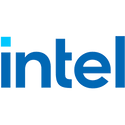Wednesday, September 4th 2024

Broadcom's Testing of Intel 18A Node Signals Disappointment, Still Not Ready for High-Volume Production
According to a recent Reuters report, Intel's 18A node doesn't seem to be production-ready. As the sources indicate, Broadcom has been reportedly testing Intel's 18A node on its internal company designs, which include an extensive range of products from AI accelerators to networking switches. However, as Broadcom received the initial production run from Intel, the 18A node seems to be in a worse state than initially expected. After testing the wafers and powering them on, Broadcom reportedly concluded that the 18A process is not yet ready for high-volume production. With Broadcom's comments reflecting high-volume production, it signals that the 18A node is not producing a decent yield that would satisfy external customers.
While this is not a good sign of Intel's Fundry contract business development, it shows that the node is presumably in a good state in terms of power/performance. Intel's CEO Pat Gelsinger confirmed that 18A is now at 0.4 d0 defect density, and it is now a "healthy process." However, alternatives exist at TSMC, which proves to be a very challenging competitor to take on, as its N7 and N5 nodes had a defect density of 0.33 during development and 0.1 defect density during high-volume production. This leads to better yields and lower costs for the contracting party, resulting in higher profits. Ultimately, it is up to Intel to improve its production process further to satisfy customers. Gelsinger wants to see Intel Foundry as "manufacturing ready" by the end of the year, and we can see the first designs in 2025 reach volume production. There are still a few more months to improve the node, and we expect to see changes implemented by the end of the year.
Sources:
Reuters, via Tom's Hardware
While this is not a good sign of Intel's Fundry contract business development, it shows that the node is presumably in a good state in terms of power/performance. Intel's CEO Pat Gelsinger confirmed that 18A is now at 0.4 d0 defect density, and it is now a "healthy process." However, alternatives exist at TSMC, which proves to be a very challenging competitor to take on, as its N7 and N5 nodes had a defect density of 0.33 during development and 0.1 defect density during high-volume production. This leads to better yields and lower costs for the contracting party, resulting in higher profits. Ultimately, it is up to Intel to improve its production process further to satisfy customers. Gelsinger wants to see Intel Foundry as "manufacturing ready" by the end of the year, and we can see the first designs in 2025 reach volume production. There are still a few more months to improve the node, and we expect to see changes implemented by the end of the year.

24 Comments on Broadcom's Testing of Intel 18A Node Signals Disappointment, Still Not Ready for High-Volume Production
Neat.
Edit, added: Intel really, really needs some good news as soon as possible. Not news like this.
www.tomshardware.com/pc-components/cpus/intel-scraps-18a-process-for-arrow-lake-goes-with-external-nodes-likely-tsmc
That sums up where we are at.
Intel i'm afraid to say are in a lot of trouble. When your own government is throwing money at you and you are still making mistake after mistake and loss after loss and then on top of that also giving money to foreign fabs to produce chips on your own soil it says to me even the government don't have much confidence in your products or capability. How long will they keep propping up Intel?
Slow news day?
AMD at least uses proven optimised older nodes wioth excellent yields and good price. N4P for Zen 5, probably N3P for Zen 6, N3E for Turin and N2 for next gen after that.
btw. You can easily see why “TSMC is that good” because they are easily beating Samsung. Not only Intel.
- regular, smaller node jumps, e.g. TSMC went from 16 nm (closer to Intel's 22 nm than their 14 nm) to 10 nm and then 7 nm. Intel, on the other hand, chose a very ambitious transition between 14 nm and 10 nm (equivalent to TSMC's 7 nm)
- Earlier use of EUV which translates to more experience
- focus on technology rather than financial engineering
Intel still has some technologies which are better than the TSMC equivalent: EMIB and Foveros. However, they haven't used them as much as one would have thought.It's almost like they never planned for a "plan B" & in the state AMD was till 2014-16 they never seriously bothered with them!
BTW, TSMC relies on machines made by a Dutch company.
Seriously, though, nobody is being racist as far as I can see wading through this pool of geo-triggered confusion. But, regardless, drop the back and forth, and please don't let me wake up to more of this.
Thanks.
PS. Duh, didn't post when I first wrote this.